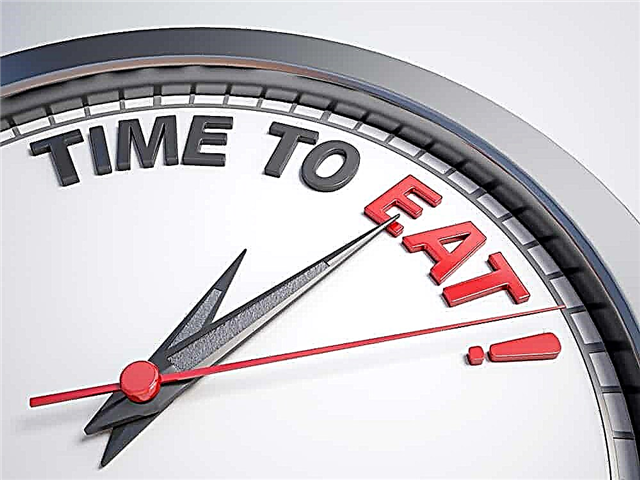The distance of 10 km is currently a companion to many marathons, not counting the fact that there are a lot of separate competitions for this distance. Therefore, it is important to know exactly how to spread the forces correctly in order to show the maximum of their capabilities in the 10 km run.

Tactics for a steady 10K run
For beginners and experienced runners, the most optimal 10K running tactic is to run evenly.
To correctly follow such tactics, you must initially calculate what result you want to run. This requires either the experience of performing at this distance. Either the experience of performances at a distance is twice as short - 5 km, or indicators of control trainings.
For example, you figured out what you want and you are quite capable of running 10 km in 50 minutes. So your task will be to run each kilometer in about 5 minutes. There may be deviations from the pace. But insignificant, in the region of 1-3 percent.

Having run 5 km in such a rhythm, you can already assess your capabilities and either continue to endure without changing the pace, or just start to add no more than 1.5-2 percent of the pace at each kilometer. Of course, if you were going to run for 50 minutes, and are ready for 40, as it turned out, then by itself having run the first kilometer in 5 minutes, you should realize that this is too slow for you and add earlier. But this is unlikely to happen. And the deviation will be small. Therefore, in such running tactics, it is important to keep an average pace.
It is advisable not to rush even on the first kilometer. Often, on 10 km races, many people start much faster than their stated average pace. Which ultimately affects the end of the distance. It must be remembered that no backlog at the start, even if it was obtained due to the starting adrenaline, does not compensate for the slowdown in speed at the end of the distance.
If you hold out at a uniform pace of 8-9 km, then it makes sense to run the finish line faster. That is, to make a run-in 1-2 km before the end of the distance.
The result will be a tactic of uniform running with a run to the finish line. This tactic is one of the most optimal and effective in 10 km running.

Tactics of 10 km running "negative split"
This tactic is the benchmark. All long distance world records have been set on it. I have already described in detail the essence of such tactics in the article "Tactics of running a half marathon". Now I will also describe briefly what it is.

The essence of a negative split is to gradually build up the pace. With this tactic, the second half is always overcome faster than the first. But the build-up should be minimal. The difference in the pace of the first and second half of the distance is only 3 percent. That is, for a pace of 5 minutes, this is 9 seconds. That is, if this running tactic is applied to the declared result for 50 minutes, then the first 5 km should be run at a pace of 5.04, and the second half at a pace of 4.56.
The danger of this tactic for inexperienced runners at this particular distance is that you can start too slowly, and this pace will not compensate for the acceleration in the second half. Therefore, use this running tactic very carefully, and preferably only if you know for sure. What you are ready for, and you know how to feel the pace well. Because for most amateurs, the difference in pace at the level of 4-5 minutes per kilometer 10-15 seconds in the first kilometers of the distance may not be noticeable. But at the same time, the body will work at a different intensity, which will affect the speed of passage of the second half.
More articles that will be of interest to novice runners:
1. How to breathe properly while running
2. How many times do you need to train per week
3. Can I run every day
4. How to run properly
Errors in tactics of running 10 km
The most common mistake is quick start. The distance is not as long as, say, a marathon, where no amateur will "tear" from the start, realizing that it is a very long run. Therefore, often in euphoria, the first kilometer and even two are obtained much faster than the declared rate. That is, counting on the result of 50 minutes, a person can run the first 2 km in 9 minutes, and then abruptly pass and crawl to the finish line. Therefore, ignore the crowd. Keep your pace.
Another mistake is the early finish. That is, after 5 km of distance, it sometimes occurs to runners. That there is very little left to run and you need to start running faster. If this pace is not justified by the real state, but will only keep on the ability to endure, then you can easily drive yourself into such a zone of intensity. Which after 2-3 km will simply make you either go on foot or reduce your running speed to a minimum. As a result, acceleration at these kilometers does not compensate for the sinking at the finish line. Therefore, start accelerating either only if you understand that the pace at which you are running is too low for you, and the error was in the wrong calculation. Or there are no more than 2 kilometers to the finish line.
In order for your preparation for a distance of 10 km to be effective, you need to engage in a well-designed training program. In honor of the New Year's holidays in the store of training programs 40% DISCOUNT, go and improve your result: http://mg.scfoton.ru/









